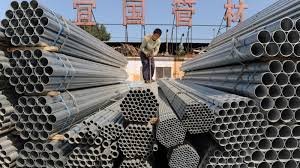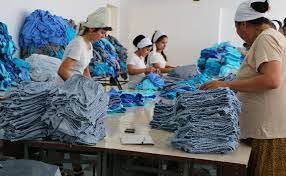(New Zealand, December 23, 2023) — Fonterra Cooperative Group is the world’s largest exporter of dairy products, a leader in dairy science and innovation, owner of a significant portfolio of brands in Asia Pacific, and a partner to many of the world’s leading food companies. Fonterra is headquartered in New Zealand, with offices in more than 40 countries around the world and a among big icon in dairy products global trade.
Fonterra is also one of the top six dairy companies in the world by turnover and the leading exporter of dairy products and responsible for more than a third of international dairy trade. The company are owned by over 11,000 New Zealand dairy farmers who supply with more than 14 billion litres of milk each year. Its global supply chain stretches from farms all over New Zealand to customers and consumers in more than 140 countries.
The dairy giant that controls 30% of the world’s dairy exports has revenue of NZD 22.9 billion in 2022 or equivalent with USD 14.4 billion, supported by 19,608 employees.
Fonterra was established in October 2001 following the merger of the country’s two largest dairy co-operatives, New Zealand Dairy Group (NZDG) and Kiwi Cooperative Dairies, with the New Zealand Dairy Board.
Fonterra was formed in October 2001 after 84% of the farmers involved voted to accept the merger of the New Zealand Dairy Board, New Zealand Dairy Group and Kiwi Co-operative Dairies in July that year.
Fonterra aims for global dairy industry leadership. The Group strives to be the lowest cost supplier of commodity dairy products, the leading price and inventory manager in the global commodity market, an effective developer of dairy ingredients partnerships in selected markets, a leading specialty milk components innovator and solutions provider, a leading consumer nutritional milks marketer, and to be a leading dairy marketer to foodservice in key markets.
The Group is co-operatively owned by over 13,000 dairy farmers whose products–sold under such brands as Anchor, Anlene, Mainland, Anmum, and Chesdale–make their way to customers in approximately 140 countries by way of the Group’s marketing arm, New Zealand Milk Products (NZMP). Over three million Fonterra cows produce over 13 billion liters of milk each year. The United States is Fonterra’s largest single market by revenue while Asia is the Group’s largest export region. Fonterra operates 29 manufacturing sites in New Zealand and has 35 additional locations throughout the world.

Historically, one among most important step when made key partnerships to strengthen its foothold in the international marketplace. During 2002, the company teamed up with Nestlé S.A. to create Dairy Partners America, a venture designed to export dairy products to South America, the United States, and Canada. The firm also eyed China, India, South America, and Eastern Europe as growth markets.
During 2002, sales increased by nearly 59 percent. Fonterra’s shareholders were not as fortunate as the company reported a loss due to falling prices and oversupply. In order to calm disgruntled farmers concerned about their payout, Andrew Ferrier–Fonterra’s elected CEO–promised to focus on improving the company’s return to its shareholders.
Ferrier referred to Fonterra as being in its childhood in a 2003 New Zealand Press Association report. The CEO felt confident that he and his management team could lead Fonterra successfully into its adolescent years. “The question for New Zealanders,” stated the aforementioned report, “is whether that adolescence is going to be a smooth transition into adulthood, or a swamp of juvenile delinquency.”
While many of the companies comprising the group had been in business for years, the birth of the Fonterra group was indeed a milestone for the country’s dairy industry. Its future, however, was dependent on the health of global economies and its ability to transform itself from a commodities business into a multi-faceted value-added concern with a broad range of branded consumer products.
Cooperative Model As Key Success
One of the greatness and uniqueness of Fonterra, this business institution is carried out with a cooperative business model. Fonterra is a Co-operative dairy company owned by more than 11,000 New Zealand dairy farmers.
Co-Operative mode, it is meant that the business is owned and controlled by the people who use its services. Co-operatives use a special form of governance. Each member has the opportunity to vote for leaders and to vote on important issues. Co-op members also share equally in the earnings of the business and any services it provides.
A cooperative, formed by like-minded individuals, ensures democratic control by its farmer shareholders. In contrast, a limited liability company, driven by profit, operates under a board structure appointed by shareholders. Fonterra’s cooperative structure allows farmers to have a say in decisions, fostering a collaborative approach.
The cooperative structure facilitates on-farm support, ensuring farmers supply quality milk. Fonterra’s collective approach to milk processing and global selling prevents farmers from competing against each other, securing the best prices for their milk. This model allows for collective decision-making and equitable pay based on global market performance.
Fonterra’s cooperative structure plays a crucial role in supporting rural livelihoods and community development. Unlike a limited liability company, a cooperative ensures farmer shareholders’ commitment to investing in the farming communities, contributing to Fonterra’s strategic goals. This strategic choice has set Fonterra on a path of sustainable growth and quality excellence in the competitive dairy market.
The company continue to believe that New Zealand milk is the highest quality and most sought-after milk in the world. Its milk has a carbon footprint, one third the global average for milk production due to grass-fed farming model. Pleasingly, the Co-op has maintained its share of the New Zealand milk supply market in a very competitive market. (GT)
























































